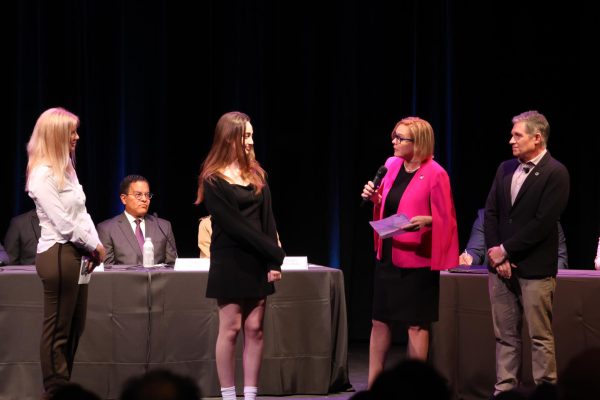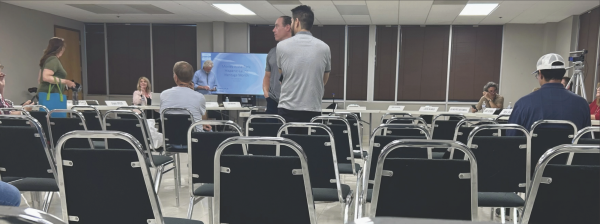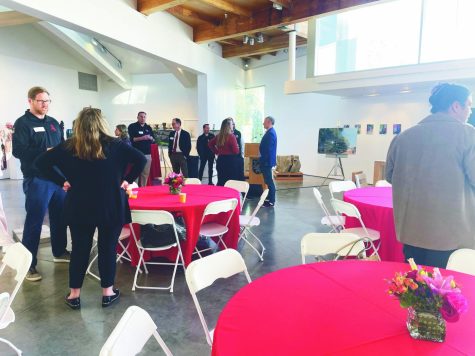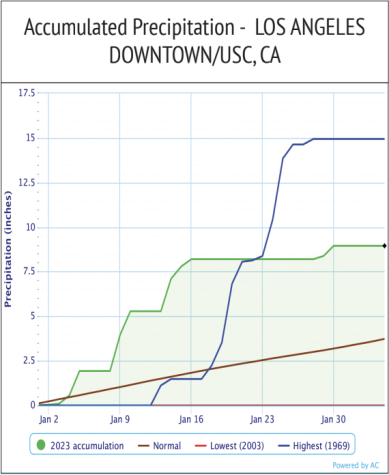Community reflects on homelessness in Studio City
Underneath a freeway, people experiencing homelessness build shelters.
March 24, 2022
As Will Sonneborn ’24 ran by a homeless encampment, he said he noticed a man who held a sign that read “I’m thirsty, and I need water.”
Sonneborn said that there’s a contradiction in witnessing homelessness in a prosperous neighborhood.
“There are many tents, many people who just don’t have anywhere to live,” Sonneborn said. “Especially under underpasses, it’s really sad to see [because] it’s my neighborhood. There’s a lot of nice houses here, and then there’s a bunch of people who have no place to live.”
A 2020 poll by the United States Interagency Council on Homelessness revealed that 161,548 people in California may experience housing instability on any given day. In addition, 271,528 public school students have experienced homelessness during 2020. In comparison to other states, California has the highest homelessness rates in adults and youth populations.
Sonneborn said it’s important to remember that each number in a homelessness statistic is a person with their own story, and they should be seen as one.
“These are normal people who have lived in like bad circumstances or even just got really unlucky and are born [into homelessness],” Sonneborn said. “They have no control over their situation. I really do think that like we [as a community] should try and do our best to like treat them more as humans as opposed to just like statistics on a chart that need to be either eliminated or unseen.”
Government works to provide solutions to homelessness
In efforts to alleviate homelessness, Incumbent Los Angeles (LA) Mayor Eric Garcetti ’88 headed Proposition HHH. The bond passed a $1.2 billion budget in order to increase LA’s housing for the homeless population, and aims to build about 10,000 units for the homeless.
Communications Director to Councilmember Paul Krekorian, Tom Waldman, said one temporary solution to homelessness are “tiny homes,” individual housing units that act as a transition to living in a house. Waldman said the homes create a sense of security for those who have been vulnerable living on the streets.
“The most immediate need is to help people get off the streets, particularly women, because they’re so vulnerable to sexual assault and physical abuse,” Waldman said. “In these tiny homes, you can go into your home at night and lock the door from the inside. So imagine the sense of security that gives a person, who might have been living out on the streets just the night before with all the fears and danger that that entails.”
The CA COVID-19 Rent Relief program, signed in by Incumbent LA Governor Gavin Newsom Jan. 2021, is a service that provides financial assistance to eligible renters and landlords who have been affected by COVID-19. The relief program aims to protect those at risk of being homeless, and can potentially compensate for the profit loss felt by landlords. Waldman said the rent relief programs are a good short-term solution for preventing evictions.
“[The future of the rent relief programs] will remain to be seen in terms of what will happen with the payment of rents and what is legal, acceptable and allowed,” Waldman said. “I don’t know if that’s a permanent solution, but it’s possible at least for the short term. So beyond that, it’s very difficult to say [what will happen] other than this will be a major topic of discussion.”
Nonprofit organizations provide relief to homeless youth
Children of the Night (COTN) is a privately funded nonprofit organization that rescues children who are being sexually exploited or have fallen victim to prostitution. Rescuing over 11,000 children, COTN has a hotline which children who are are in a desperate situation can call in order to be relocated without involving the police.
Executive Assistant to COTN Founder Lois Lee, Natasha Bashian, said child prostitutes often come from an unstable background.
“Life with a pimp can be better than life at home,” Bashian said. “Homes for these children are extremely chaotic. There’s no structure. A lot of them behave well and still get punished, misbehave and are either sexually abused or already have a history of some form of sexual assault, whether it be incest, rape [or] any form of sex crimes.”
In an article published by The Atlantic, “survival sex” is defined by one exchanging their body for sex in order to be provided with basic necessities such as clothing, shelter and food. Bashian said children who run away from home and become homeless may become involved in illegal sex trafficking to survive.
“A pimp not only gives structure because it’s so rigid, but [the children] know what time they’re going to eat,” Bashian said. “They know they’ll have a roof over their head. As manipulative as pimps can be, prostitution does just seem like the better option for a lot of these kids rather than staying at home or [outside].”
Bashian said obtaining a more extensive education is the ultimate way to escape life as a prostitute, and COTN is working to spread awareness about those paths.
“A lot of these youth not only have either dropped out of high school or have never even attempted to attend high school,” Bashian said. “Our domestic tutoring program allows them to earn their GED remotely, which we believe is the ultimate permanent solution to escaping prostitution. Earning this high school diploma, not only prepares them for further, it also [determines if] they want to go to college or join law enforcement or the military. I mean, opportunities are endless.”
Bashian said COTN stands as a support system that impacts those who seek their services.
“I mean, in terms of impact on [child prostitutes] lives individually, we’re their lifeline,” Bashian said. “We don’t call any of our kids failures. We call them a work in progress. I just think having a support system, a group of people who don’t judge them a group of people who they can rely on a group people who understand [is important].”
Community members reflect on the importance of alleviating homelessness
Matthew Steiglitz ’22 organized a food drive for the homeless through Jewish Family Service LA on campus from Feb. 1 to Feb. 8.
“Events like food drives help raise awareness about this issue and how we can help those in need,” Steiglitz said. “I would also like to emphasize the importance of food pantries as a way to improve life outcomes in the long term as well as the short term, especially for underserved youth.”
Waldman said many of the city’s efforts to help the homeless have been successful, and received well in the Studio City community.
“The general community has been very supportive of building permanent units,” Waldman said. “We still get a lot of support from the neighborhood council. So that’s been great. They actually endorsed the idea and recognize that we need to do more, much more as a city to help people who are experiencing homelessness in the street.”






































